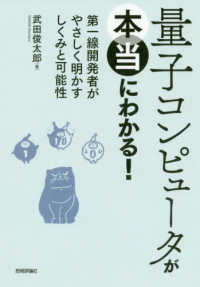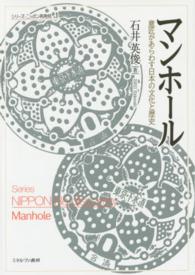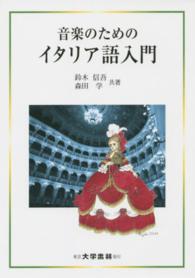Full Description
"A Community of Readers", the second of two books in the "Alexander" reading series, presents college-level reading skills in the context of interesting, contemporary issues relevant to students while offering guided, in-depth instruction in all steps of the reading and learning process: reading, discussing and reflecting, writing, and critical thinking.
Contents
PART IProcess: Joining a Community of Readers. Reading 1, "The Pact," by Dr. Sampson Davis, Dr. George Jenkins, and Dr. Rameck Hunt, with Lisa Frazier Page. The Reading Process: PRO. Preparing to Read. Determining Your Purpose. Previewing. Previewing a Section. Using Previous Knowledge. Predicting What You Will Learn. Reading 2, "Success in College: You Decide," by Skip Downing. Reading Actively and Reflecting. Reading Actively. Reflecting. Reader's Tip: Form a Study Group. Organizing What You Have Read. S:Selecting the Facts and Concepts You Need to Know. U:Using the Material You've Selected. R:Reciting the Information. E:Examining Your Learning Periodically. Reading 3, "Suburb High, USA: School or Prison," by Marley Peifer. Reader's Tip: Use a Textbook. Chapter Review. Mastery Test 1A, "Take Your Memory Out of the Closet," by Dave Ellis. 2. Working with Words: Living with Technology. Reading 1, "Can You Hold Please? Your Brain Is on the Line," by Elijah James. Working with Words. Reading and Vocabulary. Context Clues. Definition and Synonym Clues. Example Clues. General Information Clues. Contrast Clues. Reading 2, "Cyber-Bullying Defies Traditional School Bully Stereotype," by Gregg MacDonald. Word Parts. Prefixes. Roots. Suffixes and Parts of Speech. The Dictionary. Parts of a Dictionary Entry. Choosing the Correct Meaning from the Dictionary. Reading 3, "The Robot Revolution," by George Beekman and Ben Beekman. Reader's Tip: Learn Specialized Vocabulary with Textbook Aids. Chapter Review. Mastery Test 2A, "Looking into Your Brain," by Mauricio Medina. 3. Topics and Main Ideas: Our Food, Our Culture. Reading 1, "Oh, the Flavor of Your Fries," by Eric Schlosser. Topics and Main Ideas. Topics. Main Ideas. Stated Main Ideas in Paragraphs. Reader's Tip: Identify General and Specific Information. Restating Main Ideas. Implied Main Ideas in Paragraphs. Main Ideas in Short Passages. Main Ideas and Thesis Statements in Long Passages. Reading 2, "Celebrations of Thanksgiving: A Marriage of Contrasting Traditions," by April Reynolds. Reading 3, "Table Rituals," by Laurie Tarkan. Chapter Review. Mastery Test 3A, "Behind the Counter," by Eric Schlosser. 4. Support for Main Ideas: Staying Well. Reading 1, "Wellness: The New Health Goal," by Paul M. Insel, Walton T. Roth, L. McKay Rollins, and Ray A. Peterson. Supporting Points. Major Supporting Points. Minor Supporting Points. Distinguishing Between Major and Minor Supporting Points. Organizing to Learn. Marking Texts. Making Bulleted Lists. Mapping. Outlining. Summarizing. Reader's Tip: State and Source and Main Idea in Summaries. Reading 2, "Understanding Emotional Intelligence," by Skip Downing. Reading 3, "Stressed Out?" by National Institutes of Health. Chapter Review. Mastery Test 4A, "Drugs: The Truth," by Dave Ellis. 5. Patterns of Organization: Where We Live, Our Communities. Reading 1, "American Cities One Hundred Years Ago," by Robert A. Divine, T. H. Breen, George M. Fredrickson, and R. Hall Williams. Patterns of Organization. Chronological Order and Narration. Transitions and Clues. Organizing to Learn: Creating a Time Line. Definition and Classification. Transitions. and Clues. Organizing to Learn: Creating a Vocabulary List. Exemplification. Transitions and Clues. Organizing to Learn: Using an Outline and Map. Cause and Effect. Transitions and Clues. Organizing to Learn: Creating a Chart. Comparison and Contrast. Transitions and Clues. Organizing to Learn: Creating a Circle Diagram. Process. Transitions and Clues. Organizing to Learn: Creating a Flow Chart. Reading 2, "Gated Developments: Fortresses or Communities?" by Heather Eudy. Combined Patterns of Organization. Problem and Solution. Transitions and Clues. Organizing to Learn: Using a Chart and a Bulleted List. Argument. Transitions and Clues. Organizing to Learn: Using Many Options. Reading 3, "Curitiba, Brazil--A City with a Sustainable Vision," by Daniel D. Chiras. Reader's Tip: Summary Chart of Transitions and Clues for Patterns of Organization. Chapter Review. Mastery Test 5A, "Life and Death in an Indian City," by Joan Ferrante. 6. Inferences and Reading Literature. Reading 1, "Sex and Gender," by William E. Thompson and Joseph V. Hickey. Inferences. Inferences from Visual Aids. Inferences in Textbooks. Inferences in Autobiographies. Reading 2, "Six, Lies, and Conversation," by Deborah Tannen. Inferences from Words. Connotations. Irony. Reading Literature. Imagery. Similes. Metaphors. Poetry. Reader's Tip: Key Questions for Reading Fiction. Reading 3, "Sally," by Sandra Cisneros. Chapter Review. Mastery Test 6A, "Black Men and Public Space," Brent Staples. 7. Facts and Opinions: Living in a Diverse Society. Reading 1, "Identity in Transformation," by Yasmin Ahmed. Fact and Opinion. Fact. Opinion. Recognizing Fact and Opinion. Evaluating Facts. What Are the Sources of the Facts? Which Facts Are Included? Reading 2, "Colorblind: When Blacks and Whites Can See No Gray," by Alex Kotlowitz. Evaluating Opinions. What Are the Author's Worldview and Point of View? What Is the Author's Purpose? Reader's Tip: What Is the Author's Tone? Reading 3, "Signing for a Revolution: Gallaudet University," by Heather Eudy. Chapter Review. Mastery Test 7A, "Spanish at School Translates to Suspension," by T. R. Reid. 8. Critical Thinking: Crime and Punishment Reading 1, "Lizzie Borden, Murderer," by James Kirby Martin et al. Critical Thinking. Reading Skills. Reader's Tip: Fallacies. Key Questions for Critical Thinking. Reading 2, "End the War on Pot," by Nicholas Kristoff. Reading 3, "One in a Hundred," by The Pew Charitable Trusts. Chapter Review, Mastery Test 8A, "The Falsely Accused on Death Row," by Missy Gish. Additional Mastery Tests. Mastery Test 1B, "What Is Collaborative Learning?" by Toni Haring-Smith Mastery Test 2B, "A Ring Tone Meant to Fall on Deaf Ears," by Paul Vitello. Mastery Test 3B, "Eating: Why We Do It When We do," by Douglas A. Bernstein and Peggy W. Nash. Mastery Test 4B, "A Personal Stress Survival Guide," by Dianne Hales. Mastery Test 5B, "Sociological Perspectives on Urbanization and City Life," by Alex Thio. Mastery Test 6B, "The Men We Carry in Our Minds," by Scott Russell Sanders. Mastery Test 7B, "Rage," by Martin Espada. Mastery Test 8b, "Drug-Abusing Mothers-To-Be: Are They Criminals?" by Danuta Bukatko and Marvin W. Daehler. Cumulative Mastery Tests. Cumulative Mastery Test A, "The Pill," by Paul S. Boyer, Clifford E. Clark, Jr., Joseph F. Kett, Neal Salisbury, Harvard Sitkoff, and Nancy Woloch. Cumulative Mastery Test B, "The National Eating Disorder," by Jamal Jackson. PART II: A READER'S TOOLKIT. 1. Reading Visual Aids. Maps. Graphs. Pie Charts. 2. Note Taking: The Cornell Note-Taking System. Record. Reduce. Reflect. Recite. Review. Use the Cornell Method. 3. Test Taking. Overcome Test Anxiety. Anticipate Test Questions. Follow Directions. Understand the Types of Questions. Objective Questions. Essay Questions. Vocabulary Clues for Test Taking. In Objective Questions. In Essay Questions. 4. Writing Tips for Readers. 5. Evaluating and Navigating Websites. Source. Who Is Giving You the Information? Should You Trust the Author? Currency. How Current Is the Site--That Is, Is the Information Kept Up-To-Date? Usefulness. How Useful Is the Site? The Elements of a Website. 6. Reader Response Journals. 7. Reading Circles. Get Organizing. Reading Circle Meetings. Final Presentation (Optional). Role Assignment Sheets. Summarizer. Discussion Leader. Passage Selector. Researcher/Connector. Illustrator. Vocabulary Finder. Anonymous Reading Circle Evaluations (Sample). 8. Poster Sessions. Preparing Your Topic. Preparing Your Poster. Content. Visual Appearance. Preparing Your Oral Presentation. Giving Your Presentation. Poster Session Peer Evaluations. How Poster Sessions Are Graded. 9. Suggested Reading for Book Projects.







